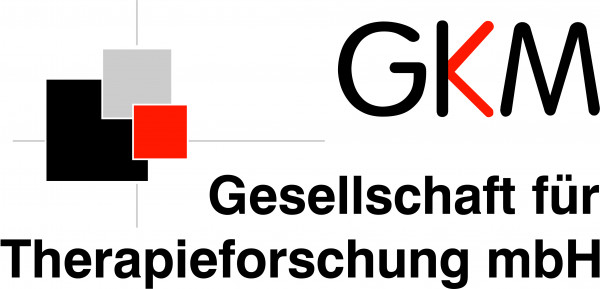
© slonme / Fotolia.com
EMWA Meeting Munich May 2016 – EMWA Symposium “Scientific and Medical Communication Today”
This year’s EMWA symposium in Munich provided an excellent overview on the diverse and fast-changing world of medical writing. Far from dealing only with dry and difficult matters, as outsiders might suspect, medical writing essentially revolves around all shades of effective communication in the world of medicine.
Beyond the scientific workshops, the EMWA symposium offered a lighter fare. Presentations followed a broad range of umbrella topics, e.g. “how to communicate science effectively”, “how scientific communication works” and “communicating scientific and clinical research – past, present and future trends”. Some of the most original talks are presented here.
“Amphibious creatures”
“Bad information can only be replaced by good information.”
Nico Pitrelli (from the Scuola Internazionale Superiore di Studi Avanzati Sissa, Italy) opened the symposium with his presentation “The roles and practices of science communicators in an evolving media ecosystem” on the changing role of medical writers.
According to Mr. Pitrelli, medical writers or science journalist are not anymore select “gatekeepers of knowledge”, in charge of educating the uninformed public. On the contrary, with the abundance of unfiltered information on the internet available to everyone, a medical writer rather would have to adopt the role of a curator. Similar to an art (or food) critic, medical writers would have to evaluate, assess and interpret science to make it palatable for the broader audience.
Mr. Pitrelli’s presentation culminated in his humorous description of the ideal medical writer of the future: an “amphibious creature”, or “hybrid” knowing how to survive in and adapt to different habitats, and being able to cope with the latest development of information technology. – Well, if that’s all. O brave new world.
Jan Geißler (from the European Patients’ Academy on Therapeutic Innovation, EUPATI, Germany) presenting “How to communicate scientific and medical information to patients, caregivers and patient advocates” made a plea to the medical writing community to show patients more appreciation. He pointed out that, despite the fact that clinical research only functions with the contribution of consenting patients, their interests are too often neglected.
Patients often take part in studies without a full understanding of their content or meaning. Very often they never hear about the outcomes of the studies they contributed to. As a starting point to solve this issue, Mr. Geißler encourages medical writers to provide better patient information/informed consent forms.
Indeed, patient information forms often appear as long, complicated or visually dull documents. The speaker presented examples where lengthy descriptions of study protocols were replaced by appealing graphics and concise flow charts, a glossary of technical terms and a one-page summary written in lay terms. According to Mr. Geißler, these changes would make a big difference in patient acceptance.
On a more general note, Mr. Geißler pointed out that patients nowadays constantly try to get online information and are often exposed to poor information. In his eyes, it should therefore be a medical writers’ responsibility not to withhold information, as it is anyway available online to everyone, but rather to “offset” bad information by good information and tailor it to the patients’ knowledge and needs. – A truly conclusive argument to boost any medical writer’s motivation to produce high quality documents.
“Stories are data with a soul.”
“The tip of the iceberg”
Picking up on the same thread, Fabienne Hübner’s (from inword.de, Germany) talk “Making science accessible—scientific communication and non-scientific media” aimed at the importance of readability of scientific literature. Importantly to her, “science needs a story”. By adding a storyline, science not only becomes more exciting but is also easier to understand and may be remembered for a longer period of time. A simple story is always to be found- e.g. “how did the process get started”, “where was the spark”.
According to Ms. Hübner, even Hollywood could teach medical writers on the basic elements of effective story telling:
1. Introduction of the “hero” (e.g., the patient/the scientific problem)
2. Conflict (e.g., missing data, unmet need)
3. Climax (e.g., trial results, breakthrough)
4. Change/solution (e.g., outlook on the impact in drug treatment)
As a vivid example of the effectiveness of story-telling, Ms. Hübner cited several studies using functional Magnetic Resonance Imaging (fMRI) while participants were read different types of texts. The narration of mere data activated only cortical Wernicke’s and Broca’s areas. “Data stories”, on the other hands, where data was presented along with an example of a patient, an emotional aspect, or a storyline, additionally activated the visual, olfactory, auditory, sensory cortexes and the cerebellum. The bottom line – good medical writing is more stimulating, even on a cerebrocortical level.
Laurence Auffret’s (from CINETIQUE Translations, UK) presentation “Medical translation – dos and don’ts”, offered insight into the various levels of communication and its implications for translation. According to Ms. Auffret, unfortunately the lingua franca, aka English, does not solve everything because language is only “the tip of the iceberg” in communication.
There are many other elements (e.g., culture, society) that influence communication just as strongly as the language. Obviously, the most relevant element for a medical writer is the difference in perception within the medical context. How a society deals with disease, for instance, may be influenced by factors such as religion or mentality. As an example, “pain” may be regarded as a natural part of life (e.g., in some parts of Asia) or a sign of weakness (e.g., in Russia), or it may provide a reason to blame a deficient healthcare system (e.g., in affluent societies).
– How to avoid potential pitfalls? First of all, be aware. Then choose your team carefully, and allow plenty of time. Lastly, try to keep your text as simple and neutral as possible.
“Prediction can be very difficult, especially if it has to do with the future.” (Niels Bohr)
Jan Seal-Roberts (from Adis, Springer Healthcare, UK) presenting “Scientific article of the future”, tried to provide a projection on how scientific articles of the future might look like. According to Ms. Seal-Roberts, the current information overload has not had a liberating effect for the science community. Instead, it rather made experts more vulnerable to not being up-to-date. Thus, in 20 years, Ms. Seal-Roberts envisions scientific articles to take account of the inherent problems of the data flood.
Foremost, the scientific article of the future would cater to the reader’s need for simplicity and promptness as created by the sheer abundance of publications: outcomes of a study could be presented quickly as raw data along with a basic overview.
An interpretation or in-depth data analysis could follow later – after publication – by any interested individual, e.g. via interactive features of the publication. In effect, it would be the responsibility of the scientific community to perform an open peer review and postulate conclusions; whereas the researcher would be less expected to discuss his or her own work. Some aspects of peer-review could even be performed by a computer.
As a result, science articles would less likely be part of an untouchable archive (as it is now) but rather an ever-evolving collection of living documents. As another consequence, the number of journals would decrease. – Reassuringly, Ms. Seal-Roberts predicted that in 20 years from now, medical writers would be needed more than ever.
To me, one of the main lessons of this symposium was: while medical writers will have to adjust to radical changes in the world of science and medicine, the need for simple and concise communication in the field of medicine will remain crucial.
An increasingly complex world will always require effective medical communicators.


